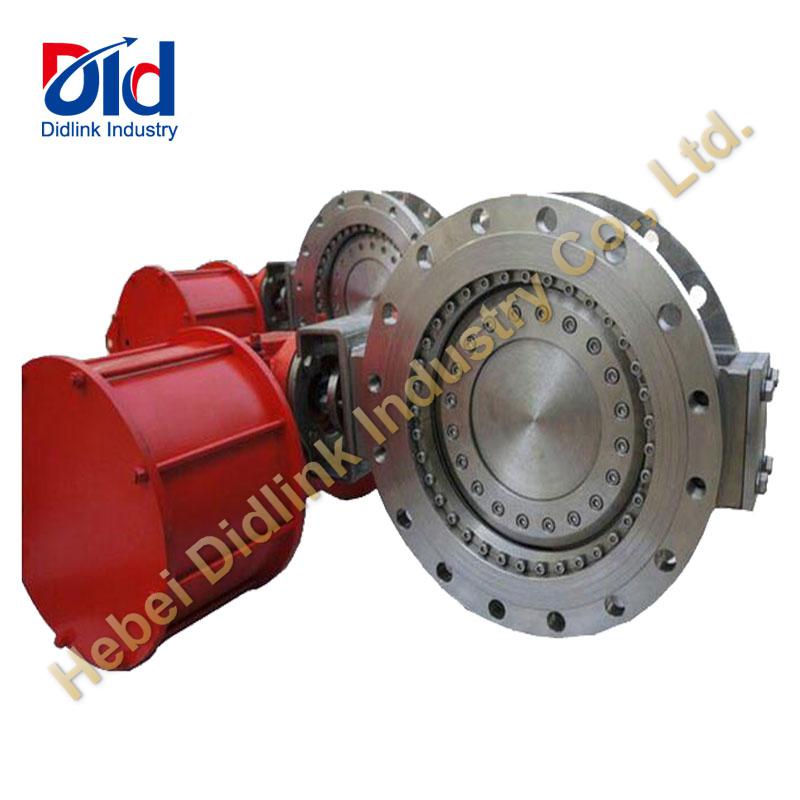The working principle and classification of butterfly valve

Butterfly valves, also known as flap valves, are commonly used in pipelines that transport various corrosive and non-corrosive fluid media in engineering systems such as furnaces, coal gas, natural gas, liquefied petroleum gas, cold and hot air, and chemical smelting. They are used to adjust and cut off The flow of the medium.
The butterfly valve has a simple structure, small volume and light weight, and is composed of only a few parts. Moreover, it can be quickly opened and closed, and the operation is simple. At the same time, the valve has good fluid control characteristics. When the butterfly valve is in the fully open position, the thickness of the butterfly plate is the only resistance when the medium flows through the valve body, so the pressure drop generated by the valve is very small, so it has good flow control characteristics.
There are two types of butterfly valve: elastic seal and metal seal. Elastic sealing valve, the sealing ring can be embedded on the valve body or attached to the periphery of the butterfly plate. Butterfly valves with metal seals generally have a longer life than those with elastic seals, but it is difficult to achieve complete sealing. The metal seal butterfly valve can adapt to higher working temperature, and the elastic seal butterfly valve has the defect of being limited by temperature.
The working principle of butterfly valve
A butterfly valve is a valve that uses a circular butterfly plate as an opening and closing member and rotates with the valve stem to open, close, and adjust the fluid channel. The butterfly plate of the butterfly valve is installed in the diameter direction of the pipeline. In the cylindrical passage of the valve body of the butterfly valve, the disc-shaped butterfly plate rotates around the axis, and the rotation angle is between 0 ° and 90 °. When it is rotated to 90 °, the valve is fully open. The flow of the medium can be controlled by changing the deflection angle of the disc.
If the butterfly valve is required for flow control, the main thing is to choose the size and type of the valve correctly.
Butterfly valve classification
1. Concentric Butterfly Valve
The structural feature of this butterfly valve is that the shaft center of the valve stem, the center of the butterfly plate and the center of the body are at the same position. The structure is simple and the manufacture is convenient. Common rubber lined butterfly valves belong to this category. The disadvantage is that the butterfly plate and the valve seat are always in a state of squeezing and scraping, with large resistance distance and fast wear.
2. Single Eccentric Butterfly Valve
In order to solve the squeeze problem of the butterfly plate and the valve seat of the concentric butterfly valve, a single eccentric butterfly valve was produced. Its structural feature is that the axis of the valve stem deviates from the center of the butterfly plate, so that the upper and lower ends of the butterfly plate no longer become the rotation axis, which disperses and reduces the excessive compression of the upper and lower ends of the butterfly plate and the valve seat.
Three, double eccentric butterfly valve
On the basis of the single eccentric butterfly valve, further improved molding is currently the most widely used double eccentric butterfly valve. Its structural feature is that the axis of the valve stem deviates from the center of the disc and the center of the body.
The effect of double eccentricity enables the butterfly plate to quickly detach from the valve seat after the valve is opened, which greatly eliminates unnecessary excessive squeezing and scraping between the butterfly plate and the valve seat, reduces the opening resistance distance, reduces wear and improves Seat life.
Four, three eccentric butterfly valve
To withstand high temperatures, a hard seal must be used, but the amount of leakage is large; for zero leakage, a soft seal must be used, but it is not resistant to high temperatures. In order to overcome the contradiction of the double eccentric butterfly valve, the butterfly valve was eccentric for a third time (offset from the center line of the metal sealing surface).
Its structural feature is to make the conical axis of the sealing surface of the butterfly plate deflect to the axis of the cylinder of the body while the eccentric position of the shaft axis of the double eccentric valve stem is eccentric. In other words, after the third eccentricity, the sealing section of the butterfly plate is no longer a real circle, but an ellipse.
The biggest feature of the third eccentricity is that the sealing structure has been fundamentally changed. It is no longer a position seal, but a torsion seal; it does not rely on the elastic deformation of the valve seat, but completely depends on the contact surface pressure of the valve seat to achieve the sealing effect.

 JACKY
JACKY